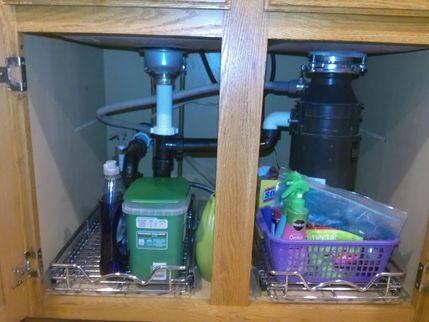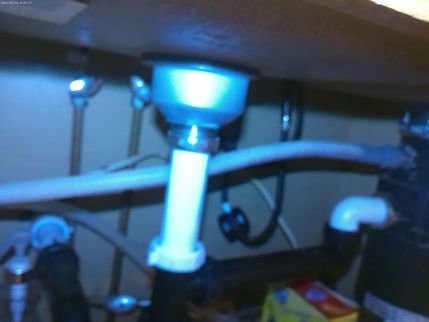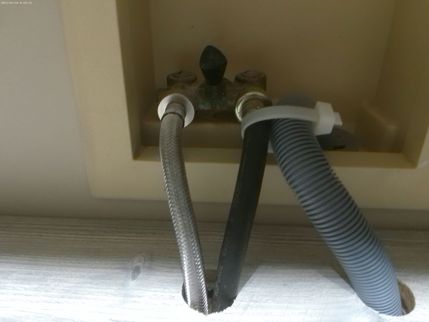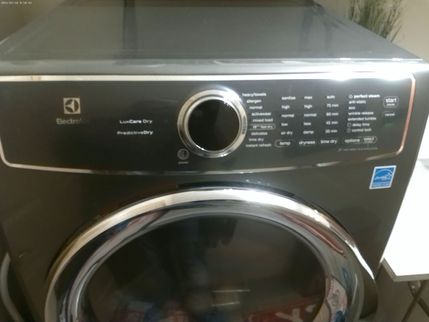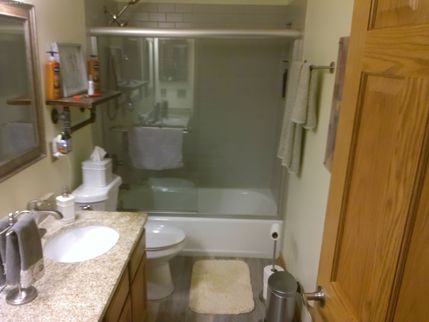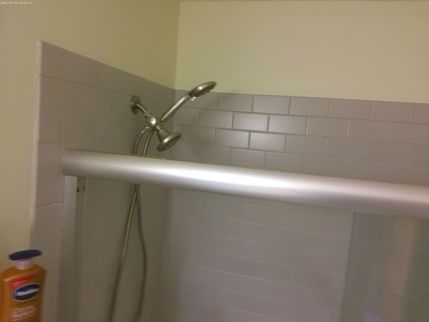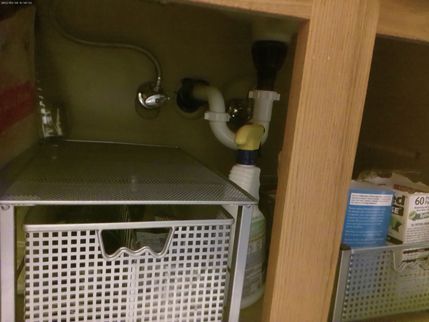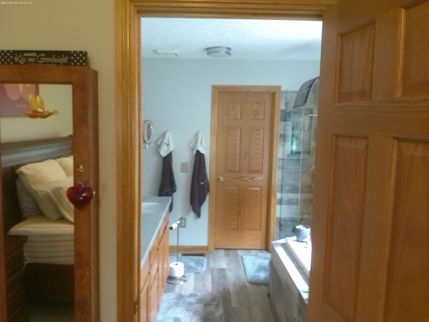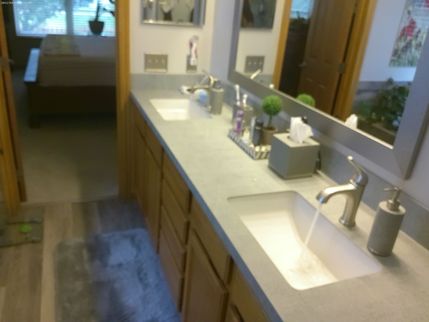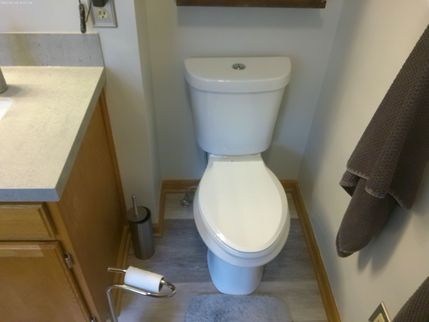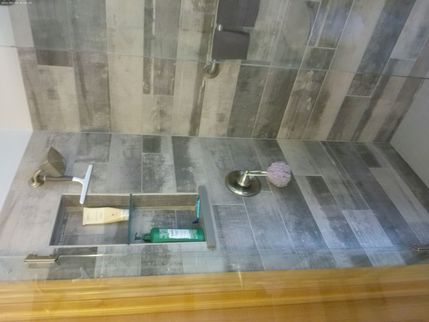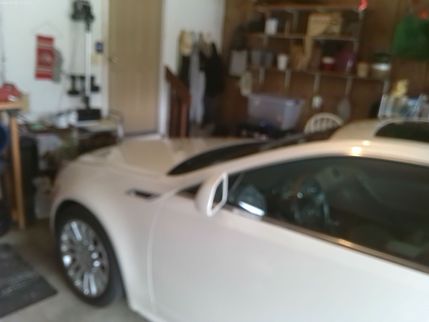The Scope and Purpose of a Home Inspection
Purchasing property involves risk
The purpose of a home inspection is to help reduce the risk associated with the purchase of a structure by providing a professional opinion about the overall condition of the structure. A home inspection is a limited visual inspection and it cannot eliminate this risk. Some homes present more risks than others. We cannot control this, but we try to help educate you about what we don’t know during the inspection process. This is more difficult to convey in a report and one of many reasons why we recommend that you attend the inspection.
A home inspection is not an insurance policy
This report does not substitute for or serve as a warranty or guarantee of any kind. Home warranties can be purchased separately from insuring firms that provide this service.
A home inspection is visual and not destructive
The descriptions and observations in this report are based on a visual inspection of the structure. We inspect the aspects of the structure that can be viewed without dismantling, damaging or disfiguring the structure and without moving furniture and interior furnishings. Areas that are concealed, hidden or inaccessible to view are not covered by this inspection. Some systems cannot be tested during this inspection as testing risks damaging the building. For example, overflow drains on bathtubs are generally not tested because if they were found to be leaking they could damage the finishes below. Our procedures involve non-invasive investigation and non-destructive testing which will limit the scope of the inspection.
This is not an inspection for code compliance
This inspection and report are not intended for city / local code compliance. During the construction process structures are inspected for code compliance by municipal inspectors. Framing is open at this time and conditions can be fully viewed. Framing is not open during inspections of finished homes, and this limits the inspection. All houses fall out of code compliance shortly after they are built, as the codes continually change. National codes are augmented at least every three years for all of the varying disciplines. Municipalities can choose to adopt and phase in sections of the codes on their own timetables. There are generally no requirements to bring older homes into compliance unless substantial renovation is being done.
This is just our opinion
Construction techniques and standards vary. There is no one way to build a house or install a system in a house. The observations in this report are the opinions of the home inspector. Other inspectors and contractors are likely to have some differing opinions. You are welcome to seek opinions from other professionals.
The scope of this inspection
This inspection will include the following systems: exterior, roof, structure, drainage, foundation, attic, interior, plumbing, electrical and heating. The evaluation will be based on limited observations that are primarily visual and non-invasive. This inspection and report are not intended to be technically exhaustive.
Your expectations
The overall goal of a home inspection is to help ensure that your expectations are appropriate with the house you are proposing to buy. To this end we assist with discovery by showing and documenting observations during the home inspection. This should not be mistaken for a technically exhaustive inspection designed to uncover every defect with a building. Such inspections are available but they are generally cost-prohibitive to most homebuyers.
Your participation is requested
Your presence is requested during this inspection. A written report will not substitute for all the possible information that can be conveyed verbally by a shared visual observation of the conditions of the property.
How to Read This Report
Getting the Information to You
This report is designed to deliver important and technical information in a way that is easy for anyone to access and understand. If you are in a hurry, you can take a quick look at our "Summary Page” and quickly get critical information for important decision making. However, we strongly recommend that you take the time to read the full Report, which includes digital photographs, captions, diagrams, descriptions, videos and hot links to additional information.
The best way to get the layers of information that are presented in this report is to read your report online, which will allow you to expand your learning about your house. You will notice some words or series of words highlighted in blue and underlined – clicking on these will provide you with a link to additional information.
This report can also be printed on paper or to a PDF document.
Chapters and Sections
This report is divided into chapters that parcel the home into logical inspection components. Each chapter is broken into sections that relate to a specific system or component of the home. You can navigate between chapters with the click of a button on the left side margin.
Most sections will contain some descriptive information done in black font. Observation narrative, done in colored boxes, will be included if a system or component is found to be significantly deficient in some way or if we wish to provide helpful additional information about the system or the scope of our inspection. If a system or component of the home was deemed to be in satisfactory or serviceable condition, there may be no narrative observation comments in that section and it may simply say “tested,” or “inspected.”
Observation Labels
All narrative observations are colored, numbered and labeled to help you find, refer to, and understand the severity of the observation. Observation colors and labels used in this report are:
- Repair:Repair and maintenance items noted during inspection. Please note that some repair items can be expensive to correct such as re-finishing hardwood floors, but are considered simply repair items due to their cosmetic nature.
- Recommended Maintenance:These are repair items that should be considered "routine home ownership items," such as servicing the furnace, cleaning the gutters or changing the air filters in the furnace.
- Improve:Observations that are not necessarily defects, but which could be improved for safety, efficiency, or reliability reasons.
- Monitor:Items that should be watched to see if correction may be needed in the future.
- Due Diligence:Observation such as a buried oil tank that may require further investigation to determine the severity and / or urgency of repair.
- Future Project:A repair that may be deferred for some time but should be on the radar for repair or replacement in the near future.
- Efficiency:Denotes observations that are needed to make the home more energy efficient as well as to bring the home up to modern insulation standards. This category typically includes windows and insulation. Other items, such as lighting and appliances, are not inspected for their energy status.
- Completed:Items that were initially an issue but have since been completed.
- Note:Refers to aside information and /or any comments elaborating on descriptions of systems in the home or limitations to the home inspection.
- Description:Detailed description of various aspects of the property noted during the inspection.
Summary Page
The Summary Page is designed as a bulleted overview of all the observations noted during inspection. This helpful overview is not a substitution for reading the entire inspection report. The entire report must be read to get a complete understanding of this inspection report as the Summary Page does not include photographs or photo captions.
Summary
Repairs
- RCG-7 Roof, Chimney and Gutters:
The gutters and downspouts require repairs to ensure reliable performance. Gutter and downspout systems are critical for controlling roof runoff and preventing water from damaging the building. Regular gutter care is needed to keep this system working reliably, especially keeping gutters clean, well-secured and draining away from the structure. Implement gutter and downspout repairs as needed. Examples of specific observations noted during inspection include:
🛠
- -Downspouts-
- ESDW-2 Exterior Siding, Doors and Windows:
- EDFW-1 Electric Distribution and Finish Wiring:
Several GFCI protected breakers were noted to be wired in series - see the kitchen. This is not a safety hazard, but it is a non-standard installation and can be confusing when going to re-set breakers as re-set buttons will not re-set if another GFCI is tripped on the same circuit. Have this further investigated and repaired by a licensed electrician.
- EDFW-4 Electric Distribution and Finish Wiring:
Modern standards recommend smoke alarms in all bedrooms, in all hallways outside bedrooms and at least one on each floor of the building. At the time of inspection smoke alarms were incomplete in the bedrooms.
- G-1 Garage:
The use of GFCI (Ground Fault Circuit Interruption) protection is inconsistent with modern minimum standards for safety. GFCI protection is recommended for the electrical receptacles in the following locations: the two dedicated kitchen appliance circuits, all receptacles within 6 feet of a sink, bathrooms, exterior, garage, unfinished basements, laundry and all wet and damp locations. GFCI's protect against electrocution by limiting the duration of an electrical shock. These are an important modern safety feature that have proven to save lives. Hire a licensed electrician to further evaluate and update GFCI protection for improved safety. Examples of observations noted during inspection include:
- No GFCI protection in the greenhouse
- No GFCI protection in the exterior back deck
- G-2 Garage:
Auto close hinges are missing. This safety device is recommended to ensure the door is closed to keep pollutants and even fire from spreading into the house. Repair as needed.
- HCFV-2 Heating, Cooling, Fireplaces and Ventilation:
This building has no provisions for mechanical ventilation - I did not find a 24 hour timer for a fan anywhere - perhaps I missed one? Installing a bath or laundry fan on a 24 hour timer is recommended to ensure mechanical air changes. This can help keep relative humidity in check. As a general rule, keep relative humidity below 50% in cold weather to reduce chances for condensation. You can monitor relative humidity with inexpensive temperature and relative humidity gauges - I use one made by Acurite. For a nice fan system I recommend looking at Panasonic Whisper Green fans - these do not rely on a timer and run continuously to facilitate air changes. http://www.panasonic.com/business/building-products/ventilation-systems/products/whisper-green.asp
- HCFV-6 Heating, Cooling, Fireplaces and Ventilation:
The gas fireplace does not appear to be correctly labeled. Have this fireplace serviced and repaired to ensure it has the proper LP rated burner and it is correctly labeled.
- P2-6 Plumbing:
An expansion tank is recommended for the water heater; these are required if the house has a closed plumbing system. Expansion tanks help reduce pressure on the plumbing system by creating a buffer or a place for water to expand into as water swells during thermal expansion. Installation of expansion or pressure tanks is modern installation practice and will be required if a pressure reducing valve has been installed on a public water supply. Consult with a qualified plumber to install.
Recommended Maintenance Items
- G1-3 Grounds:
Cracks were noted in walkway flatwork. Regular sealing of small to moderate cracks with a quality exterior flexible sealant can minimize water penetration and prolong the life of the flatwork. Large cracks can present a more urgent need for repair, especially if the cracks lead to displacement and trip hazards.
✒
- No immediate repair appears necessary, though water will continue to deteriorate the surface until the flatwork is repaired or replaced.
- G1-4 Grounds:
Pruning trees, branches and vegetation away from the house is recommended. Where trees, branches and large shrubs can provide rodent access to the roof, a minimum 6-foot clearance is recommended as many rodents can jump 6-feet. All vegetation, including smaller landscaping such as grasses, flowers and shrubs should be kept 1-foot off the house to eliminate contact which could trap moisture against the building.
- ESDW-3 Exterior Siding, Doors and Windows:
The wooden door jamb material is rotting at its base near the threshold. This is a common spot to have wood decay problems as water collects on the threshold and soaks into the end grain of the wood. Repair / replace damaged wood as needed.
- HCFV-7 Heating, Cooling, Fireplaces and Ventilation:
The gas log fireplace has been shut down and was not responding to normal operating controls. I recommend making this unit operational prior to listing the house.
Improves
- G1-5 Grounds:
The riser heights for the exterior garage stairs are not even and are not to modern standards. This is a trip and safety hazard. The height of the tallest riser shall not exceed the smallest riser by more than 3/8th of an inch. Hire a licensed general contractor to further evaluate and repair.
- ES1-4 Electric Service:
The white conductors inside the electric panel at the breakers are not correctly identified as hot or ungrounded conductors - these should be painted in black or red ink for correct identification and improved safety. I would do this in the context of other electrical repairs or upgrades.
- HCFV-4 Heating, Cooling, Fireplaces and Ventilation:
This gas log fireplace does not have a fan system installed. This is pretty normal, but if you wish to install a fan this will need to be added.
- P2-3 Plumbing:
Piercing valves or saddle fittings were noted on the supply piping system. These are frequently used to deliver water to the refrigerator or ice maker. These types of plumbing connections are prone to leaking/failure. As an upgrade I recommend installation of a more reliable "T" with shut-off.
Monitors
- G1-2 Grounds:
Inadequate clearance between the siding and the soils was noted. This is conducive to wood destroying organisms as it can trap water against the siding. Where possible, a gap should be provided to allow the wood to keep dry. Generally, a 6-inch clearance is recommended between siding and soils. Please note that this is a fairly common installation, and inadequate clearances can often be kept maintained by being diligent about keeping new soils, mulch and leaves from accumulating.
- G-3 Garage:
The stair treads have openings between the treads that are larger than 4-inches. This could be a safety hazard for children. Standards recommend openings in stair treads similar to guardrails - no more than 4 inches. Have this further investigated and repaired by a qualified general contractor.
- HCFV-5 Heating, Cooling, Fireplaces and Ventilation:
A mantle has been installed above the gas fireplace. Direct vent gas fireplaces are designed principally for their aesthetic value, but they also produce as much heat output as possible, within ANSI and UL standards for combustible temperatures. The allowable standard for combustibles is 117°F above room temperature. Since the average room temperature is 70-75°F, a 187-192°F surface temperature can be expected. On a solid surface, such as a mantel, 150°F is very hot to the touch. Monitor this gas log during use and be sure combustible materials do not exceed this temperature standard. This installation may need to be replaced or reconfigured for improved safety.
- Note: Also note that each manufacturer may have different clearance requirements for mantles. We try and look this stuff up where feasible, but often specific installation requirements are not accessible and in general, verification of manufactories installation requirements is not possible as part of a visual and limited home inspection. If you have concerns the best is to consult with the installation instructions from the manufacturer. If these can be located will will always assist with looking this up.
Due Diligences
- RCG-2 Roof, Chimney and Gutters:
The roofing material on this building is a recently installed dimensional or architectural grade shingle. These are often rated as 30-40 year shingles. In practice, as a roof assembly, these tend to last about 18-23 years depending on the quality of the installation, the steepness of the roof and the exposure. The installation appears neat and professional. Many professional roofing companies will offer limited workmanship warranties. Please note that roofs are not a shingle. they are an assembly and they require regular cleaning and maintenance to keep them performing reliably. Examples of observations noted during inspection include:
Recommendation
Inquire with the seller about any warranty and/or installer information for this new roof covering installation.
- ES1-1 Electric Service:
No permit stickers or paper work related to electrical work were found on the electric panel. Inquire with the seller for any additional information about this installation.
- P2-1 Plumbing:
No water meter was found. This house seems to be on a public water system, which should have a metering device. Inquire with the seller or the utility as needed to locate the water meter.
- P2-4 Plumbing:
A video camera sewer scope is recommended. An evaluation of the sewer line below the ground is beyond the scope of this inspection. Due to the age and location of the building, a sewer scope is recommended to further evaluate the sewer line and the below ground connections between the house and the municipal sewer line. Sewer scopes are done using video cameras and can reveal the materials, condition and reliability of the sewer line. If that has been done recently, I recommend having a sewer scope performed.
- K-3 Kitchen:
This home has quality appliances which can be expensive to service. You may want to look into some of the available appliance warranty programs.
Future Projects
- RCG-5 Roof, Chimney and Gutters:
The concrete chimney cap may require future repair to prevent water from entering and damaging the chimney. Drip cap looks to show lack of proper overhang. Hire a mason to further evaluate and repair the masonry chimney cap.
- ESDW-1 Exterior Siding, Doors and Windows:
Inadequate kick-out flashings were noted between the roof and wall junctures. These are important to divert water away from the siding and onto the roof to prevent water from running behind the siding. Kick-out flashings should generally be 4-inches and should direct water away from the siding and into a gutter. No signs of water damage were found during inspection, so repair may not be urgent, but problems at roof to wall junctures can cause serious water damage if they develop. Hire a qualified contractor familiar with siding installation to further evaluate and repair.
✏
- A logical time to improve this would be during the next re-roofing job.
- I could find no visible evidence that this needs to be done right away.
- P2-5 Plumbing:
This is a very old water heater. Replacement is recommended for improved reliability as this unit could fail at any point. The average life of these water heaters is 8-20 years. The service life of a water heater will depend on a variety of factors such as water quality and regular scheduled maintenance such as flushing the tank and replacing sacrificial anodes.
Efficiencies
- HCFV-3 Heating, Cooling, Fireplaces and Ventilation:
This house has an older gas log fireplace. This is not a very energy efficient unit as by modern safety standards the flue damper must be locked open for safety and this allows heat to escape the house even when the unit is not in use. During inspection I noted a number of conditions.
✒
- Positive Attributes
- The gas log fireplace has nice glass doors installed. These will act as a flue damper and limit heat loss.
- The flue damper is correctly locked open
- Negative Attributes
- This is a generally less energy efficient gas log set, especially compared to modern direct vent equipment.
Recommendation
Have this unit serviced and repaired or updated as recommended by a specialist.
Completed Items
- RCG-1 Roof, Chimney and Gutters:
The roofing material on this building is a recently installed architectural grade shingle. These are often rated as 30-40 year shingles. In practice, as a roof assembly, I find these last closer to 18-23 years depending on the quality of the installation, the steepness of the roof and the amount of exposure. The installation appears neat and professional. Many professional roofing companies will offer limited workmanship warranties. Please note that roofs are not a shingle. they are an assembly and they require regular cleaning and maintenance to keep them performing reliably. Examples of observations noted during inspection include:
Recommendation
Disclose any warranty and/or installer information for this new roof installation.
Notes
- GC-1 General Comments:
- RCG-6 Roof, Chimney and Gutters:
Gutters were noted to be clean at the time of inspection. Be sure to clean gutters quarterly to ensure they are performing as intended.
- ES1-5 Electric Service:
The electric panel is full, there is no more room on the bus bar to add breakers. You may be able to use tandem breakers if you want to expand the panel, but this could be tricky or impossible to also follow modern requirements for AFCI's. This could make this panel obsolete or force the need for a sub-panel depending on plans for future wiring here.
- EDFW-3 Electric Distribution and Finish Wiring:
Carbon monoxide alarms were found and noted during inspection. Be sure to check these regularly. The standard is 1/ floor and 1 outside all sleeping areas.
- HCFV-1 Heating, Cooling, Fireplaces and Ventilation:
The air conditioning system and condensate control system could not be tested during inspection. Outdoor temperatures should exceed 65 degrees F for at least 24-hours or the air conditioning equipment can be damaged by testing. I recommended having this system serviced and inspected prior to the next cooling season.
- P2-2 Plumbing:
The only hose bib on the outside of the house has been winterized, so I could not test the water pressure today. This limited my inspection today.
- P2-7 Plumbing:
Inspection of the hot water tank shows no dielectric union on connectors. Corrosion of two dissimilar metals and would recommend evaluation by qualified plumber.
- K-2 Kitchen:
No air gap noted for the dishwasher waste line but they did run a high loop. This is not done to WA state standards, but is generally satisfactory and many jurisdictions in the state allow for simply a "high loop" installation.
- A-1 Attic:
The attic access hatch in the garage was inaccessible to inspection today because a car was parked below. This limited the scope of this inspection.
- CS1-1 Crawl Space:
The photos provided here show representative images of this crawl space at the time of inspection.
📃 The Complete Inspection Report
General Comments
Building Characteristics, Conditions and Limitations
Style of Home: Ranch
Type of Building : Single Family (1 story with Basement)
Approximate Square Footage: 1800
The approximate square footage listed here is listed as a courtesy and is based off of public records and disclosure. An evaluation of square footage of the buildings and property lines is beyond the scope of this inspection.
Approximate Year of Original Construction: 1994
Attending the Inspection: Vacant (inspector only)
Occupancy: Unoccupied, but staged with furniture
Animals Present: No
Weather during the inspection: Partly cloudy
Approximate temperature during the inspection: Below 65[F]
Ground/Soil surface conditions: Dry
For the Purposes of This Report, the Front Door Faces: North
This house was vacant / unoccupied at the time of inspection. Vacant and unoccupied houses present unique challenges for home inspection, especially the piping and wiring systems which have not be subject to regular use prior to the inspection. While these systems can be tested during inspection, this one-time test is different than regular use and it is difficult to know how these systems will respond to regular use after the inspection. For example, septic systems may initially function and then fail under regular daily use. Plumbing traps may operate with no signs of leaks and then let go when being actively used for a few days. Shower pans may only leak when someone is standing in the shower and taking a shower. Seals for plumbing fixtures can dry up and leak when not is use. Sewer lines with roots may allow water flow, but then fail when waste and tissue are flushed; it can take a few days for that to backup. Please understand we are trying our best to look for clues of past or existing problems to paint a realistic best-guess as to the reliability of these systems during inspection.
Grounds
Drainage and Site
Clearance to Grade: Siding Too Close to Soils - Monitor
Downspout Discharge: Below grade
Site Description: Moderate slope
Inadequate clearance between the siding and the soils was noted. This is conducive to wood destroying organisms as it can trap water against the siding. Where possible, a gap should be provided to allow the wood to keep dry. Generally, a 6-inch clearance is recommended between siding and soils. Please note that this is a fairly common installation, and inadequate clearances can often be kept maintained by being diligent about keeping new soils, mulch and leaves from accumulating.
Driveways/Walkways/Flatwork
Driveway: Concrete
Walkways: Concrete
Patios: Pavers
Cracks were noted in walkway flatwork. Regular sealing of small to moderate cracks with a quality exterior flexible sealant can minimize water penetration and prolong the life of the flatwork. Large cracks can present a more urgent need for repair, especially if the cracks lead to displacement and trip hazards.
✒
- No immediate repair appears necessary, though water will continue to deteriorate the surface until the flatwork is repaired or replaced.
Window and Stairwells
Present
Grounds, Trees and Vegetation
Trees/Vegetation too near building: Yes - Prune Vegetation off House
Pruning trees, branches and vegetation away from the house is recommended. Where trees, branches and large shrubs can provide rodent access to the roof, a minimum 6-foot clearance is recommended as many rodents can jump 6-feet. All vegetation, including smaller landscaping such as grasses, flowers and shrubs should be kept 1-foot off the house to eliminate contact which could trap moisture against the building.
Retaining Walls
Retaining Wall Material: None Noted
Exterior Stairs
Exterior Stairs: Standard
The riser heights for the exterior garage stairs are not even and are not to modern standards. This is a trip and safety hazard. The height of the tallest riser shall not exceed the smallest riser by more than 3/8th of an inch. Hire a licensed general contractor to further evaluate and repair.
Fences
Exterior Fencing: Present
The property has a fencing system in place. Inspection and evaluation of fencing is beyond the scope of a home inspection. If the fencing system is important for your use of this property, I recommended a self-examination to see how it will meet your needs. I may make cursory comments about fencing as a courtesy.
Outbuildings, Trellises, Storage Sheds, Barns
None noted
Roof, Chimney and Gutters
Roof Materials
Method of Roof Inspection: Viewed with a drone, Viewed at top of ladder
Please note that the roof was too tall to access by ladder and walk safely. A drone was used to try and get some information about the roof. This is not as good an inspection as walking the roof, but is the best and safest option given limited access. Any and all relevant photos or videos will be included in this report.
Roof Style: Gable
Flashings, Valleys and Penetrations: Present and Visually Standard
Roof flashings are used to keep a roofing system waterproof where the roofing material starts, stops, changes direction or is penetrated. During inspection, we look for standard flashing techniques that could be considered normal or standard in our region. Damaged, incomplete or non-standard flashings can be a sign of an older or less reliable roofing system and may require repair. Any non-standard flashings noted during inspection will be reported on below if found.
Roof Covering Materials: Three-tab composition shingle
Approximate Age of Roof Covering: 4-6 Years
Overlay Roof: No
Shingle Fastening Accessible For Inspection : No
Please note that when inspecting composition roof installations, I try and look under shingles to see how the shingles have been fastened. Proper fastening is critical for successful roof performance. Often the shingles are bonding so well, they cannot be lifted to inspect the fastening. In this case, I was unable to lift the shingles and see the fastening pattern - they are bonded well and I do not use a flat bar to pry them apart as part of a visual inspection unless there is a reason to start chasing visible leaks. While this limits my visual inspection, this is a good sign, as loose, un-bonded shingles can lead to wind damage and would be written up as a defect.
The roofing material on this building is a recently installed dimensional or architectural grade shingle. These are often rated as 30-40 year shingles. In practice, as a roof assembly, these tend to last about 18-23 years depending on the quality of the installation, the steepness of the roof and the exposure. The installation appears neat and professional. Many professional roofing companies will offer limited workmanship warranties. Please note that roofs are not a shingle. they are an assembly and they require regular cleaning and maintenance to keep them performing reliably. Examples of observations noted during inspection include:
Recommendation
Inquire with the seller about any warranty and/or installer information for this new roof covering installation.
The roofing material on this building is a recently installed architectural grade shingle. These are often rated as 30-40 year shingles. In practice, as a roof assembly, I find these last closer to 18-23 years depending on the quality of the installation, the steepness of the roof and the amount of exposure. The installation appears neat and professional. Many professional roofing companies will offer limited workmanship warranties. Please note that roofs are not a shingle. they are an assembly and they require regular cleaning and maintenance to keep them performing reliably. Examples of observations noted during inspection include:
Recommendation
Disclose any warranty and/or installer information for this new roof installation.
Chimneys
Present
Chimney Material: Masonry
Chimney Flue Liners: Not visible
The concrete chimney cap may require future repair to prevent water from entering and damaging the chimney. Drip cap looks to show lack of proper overhang. Hire a mason to further evaluate and repair the masonry chimney cap.
Skylights
None noted
Gutters and Downspouts
Gutter and Downspout Materials: Aluminum
The gutters and downspouts require repairs to ensure reliable performance. Gutter and downspout systems are critical for controlling roof runoff and preventing water from damaging the building. Regular gutter care is needed to keep this system working reliably, especially keeping gutters clean, well-secured and draining away from the structure. Implement gutter and downspout repairs as needed. Examples of specific observations noted during inspection include:
🛠
- -Downspouts-
Exterior Siding, Doors and Windows
Siding and Trim
Trim Material: Wood
Siding Material: Brick, Vinyl, Wood
Inadequate kick-out flashings were noted between the roof and wall junctures. These are important to divert water away from the siding and onto the roof to prevent water from running behind the siding. Kick-out flashings should generally be 4-inches and should direct water away from the siding and into a gutter. No signs of water damage were found during inspection, so repair may not be urgent, but problems at roof to wall junctures can cause serious water damage if they develop. Hire a qualified contractor familiar with siding installation to further evaluate and repair.
✏
- A logical time to improve this would be during the next re-roofing job.
- I could find no visible evidence that this needs to be done right away.
Eaves
Cedar
Exterior Doors
Exterior Door Styles: Solid core
Exterior Window Frames
Window Frames: Vinyl
Electric Service
Electric Service Permits Found
No permit stickers or paper work related to electrical work were found on the electric panel. Inquire with the seller for any additional information about this installation.
Electric Service Voltage Tested
Service Voltage: 120/240
Electric Service Equipment
Service Entrance (SE) conductor Size: Aluminum, 4/0, 200 amps
Main Panel Amperage: 200 amps
Electric Service Amperage: 200 amps
Main Electric Panel Location: Basement
Panel Manufacturer: Square D
The white conductors inside the electric panel at the breakers are not correctly identified as hot or ungrounded conductors - these should be painted in black or red ink for correct identification and improved safety. I would do this in the context of other electrical repairs or upgrades.
The electric panel is full, there is no more room on the bus bar to add breakers. You may be able to use tandem breakers if you want to expand the panel, but this could be tricky or impossible to also follow modern requirements for AFCI's. This could make this panel obsolete or force the need for a sub-panel depending on plans for future wiring here.
Sub Panel
Sub Panel: None Noted
Electrical Grounding System
Present - Could Not Confirm, Grounding Rod Noted
During a home or property inspection, every effort is made to inspect the visible components of the electrical system grounding. The grounding system is critical for safely discharging electrical surges, especially in the case of lightning strikes. There is no way in the context of a home inspection to verify the "effectiveness" of the grounding system as much of the system is not visible and there are not practical tests one can perform in the way we can test a furnace or a plumbing fixture. However, there are many things that can lead me to recommend further evaluation of the grounding system by a licensed electrical contractor and they will be documented in the observations below if discovered.
Electrical Bonding System
Present - Could Not Confirm
During the inspection, I attempt to visually document electrical system bonding. There is no way in the context of a home inspection to verify the "effectiveness" of system bonding. All metallic systems in the building are required to be "bonded" (connected) to the the building's electrical grounding system. Bonding creates a pathway to shunt static charges (that would otherwise build up on the system) to earth, and to provide a pathway to trip a breaker in the event that these bonded metallic components became energized. There are many things that can lead me to recommend further evaluation of this system by a licensed electrical contractor and they will be documented as repair items in the observations below if discovered.
Electric Distribution and Finish Wiring
Branch Wiring
Wire Material: Copper
Wiring Method: Non-metallic sheathed cable
Receptacles and Fixtures
Inspection Method: Tested All Accessible
During inspection I make an effort to test and inspect all accessible electric receptacles and switches. In general, the scope of testing is directly related to access; where personal belonging and furniture obstruct access to receptacles and fixtures, fewer of them can be reasonably tested during inspection. All defects found during inspection today will be listed in this report.
Electric Receptacles: Three wire receptacles
Several GFCI protected breakers were noted to be wired in series - see the kitchen. This is not a safety hazard, but it is a non-standard installation and can be confusing when going to re-set breakers as re-set buttons will not re-set if another GFCI is tripped on the same circuit. Have this further investigated and repaired by a licensed electrician.
Ceiling Fans
Ceiling Fans: Present and Tested
The ceiling fans were tested and operating during inspection.
Smoke and Carbon Monoxide Alarm Systems
CO Alarms: Present
The installation of carbon monoxide alarms is recommended for all homes that have fuel burning appliances such as gas or oil furnaces, gas water heaters, gas ovens and cook-tops, gas fireplaces and wood stoves. In addition, Washington State law (WAC 51-51-0315) now requires UL 2034 approved carbon monoxide alarms in ALL homes and condominiums being sold in Washington State. The location should be: at least one alarm outside of all sleeping areas and one on each floor of the house. Best practices are to have these alarms hardwired with a battery back-up - though requirements are for the installation to meet manufacturer's specifications. Carbon monoxide is a colorless, odorless gas that can cause sickness, nausea and even death. Alarms have a useful service life of roughly 6 years, so changing them more frequently than smoke alarms is recommended.
Smoke Alarms: None In Bedrooms
During the home inspection, I try and test a representative sample of the smoke alarms by using the test button on the alarms. This is NOT an accurate test of the sensor just a test to see if the unit is powered. For reliability, fire marshals recommended updating smoke alarms every 10 years and changing batteries bi-annually. The latest data indicate that we should be using photoelectric technology in our smoke alarms for improved fire detection and to reduce problems with false alarms which can lead to disabling of this important safety system. Unfortunately, the alarms have to be removed to determine if they are photo-electric or ionization types. It is surprisingly complex to accurately test a smoke alarm system and determine the reliability, age, and type of sensor technology used, especially as many homes can have half a dozen or more alarms throughout the house. A complete evaluation of smoke alarms is beyond the scope of this inspection. For optimal fire safety, I recommend taking control of these important safety devices and learning about how to service and maintain your smoke alarm system to keep the building occupants safe. For more information, please read this link. For more information, please read this link.
Modern standards recommend smoke alarms in all bedrooms, in all hallways outside bedrooms and at least one on each floor of the building. At the time of inspection smoke alarms were incomplete in the bedrooms.
Carbon monoxide alarms were found and noted during inspection. Be sure to check these regularly. The standard is 1/ floor and 1 outside all sleeping areas.
Decks, Porches and Balconies
Wood Decks Porches and Balconies
None noted
Concrete Decks, Stoops, Landings and Porches
Concrete Structure: Noted at the entry, Landing in back
Water-Resistant Decks and Balconies
Water Proof Surfaces: None Noted
Garage
Garage General
Garage Type: Attached
The use of GFCI (Ground Fault Circuit Interruption) protection is inconsistent with modern minimum standards for safety. GFCI protection is recommended for the electrical receptacles in the following locations: the two dedicated kitchen appliance circuits, all receptacles within 6 feet of a sink, bathrooms, exterior, garage, unfinished basements, laundry and all wet and damp locations. GFCI's protect against electrocution by limiting the duration of an electrical shock. These are an important modern safety feature that have proven to save lives. Hire a licensed electrician to further evaluate and update GFCI protection for improved safety. Examples of observations noted during inspection include:
- No GFCI protection in the greenhouse
- No GFCI protection in the exterior back deck
Garage Doors and Automatic Openers
Overhead Garage Door Type: Vinyl
Automatic Garage Opener: Present
Garage Occupant Door: Not Applicable
Garage Floor
Garage Slab: Concrete
Garage Stairs
Garage Stairs: Standard
The stair treads have openings between the treads that are larger than 4-inches. This could be a safety hazard for children. Standards recommend openings in stair treads similar to guardrails - no more than 4 inches. Have this further investigated and repaired by a qualified general contractor.
Fuel Storage and Distribution
Oil Storage
None noted
Propane Storage
None noted
Gas, Propane and Oil Piping
Gas Piping Materials Noted: None Noted
Heating, Cooling, Fireplaces and Ventilation
Heating System
Energy Source: Natural gas
Heating Method: Gas forced air furnace
This house has a gas forced air furnace. A critical component to all combustion heating equipment is the heat exchanger. This is the welded metal assembly inside the furnace that contains the products of combustion so that moisture, carbon monoxide and other products of combustion do not mix with interior air and get safely vented to the exterior. Heat exchangers on modern furnaces have an average life expectancy of 15-20 years. Unfortunately, heat exchangers are concealed inside the heating equipment; they are not visible and specifically excluded from a home inspection. Cracks in heat exchangers may be concealed and can pose a potential safety hazard.
Manufacturer: Heil
Capacity: 88,000 btu's
Age: 2017
Last Service Record: None
Air Filters
Cooling Systems and Heat Pumps
Air Conditioning Present
The following list is a minimum set of requirements to be expected of heat pump or air conditioning servicing. I provide these as a courtesy to show they types of check-ups that should be expected from a professional servicing.
- Check compressor efficiency
- Check refrigerant level
- Clean the condenser coil
- Change or clean air filters
- Inspect contactors and wiring
- Inspect drive-sheaves, pulleys and belts
- Check and adjust for proper air flow
- Clean the blower motor as needed
- Lubricate all motors and shaft bearings
- Check, calibrate and program the thermostats and be sure the thermostat has adequate batteries as needed
- Check unit smoke detector, clean filter if applicable
- Check safety disconnect, laser-temp -- check across contacts
System Type: Air Source
Listed Nominal Capacity: 3 Tons
Energy Source: Electric
Age: 2015
The air conditioning system and condensate control system could not be tested during inspection. Outdoor temperatures should exceed 65 degrees F for at least 24-hours or the air conditioning equipment can be damaged by testing. I recommended having this system serviced and inspected prior to the next cooling season.
Heating and Cooling Distribution Systems
Heat Source in Each Room: Present
Distribution Method: Forced Air / Ducts
Mechanical Ventilation Systems
Bath Fan Ducting: Ductwork not visible
Determining proper ventilation to the exterior from kitchen, bath and laundry fans can be tricky as exhaust fan ductwork is often concealed behind finishes and fan terminations can be all over the house from the roof to the foundation, presenting difficulties for systematically checking every fan termination. During inspection, every effort is made to verify proper terminations of fan vents to the exterior, but it is possible to miss something here that is latent or concealed.
Kitchen Fan Ducting: Ductwork not visible
Whole House Fans, Ventilation and HRVs: No Mechanical Ventilation Found
This building has no provisions for mechanical ventilation - I did not find a 24 hour timer for a fan anywhere - perhaps I missed one? Installing a bath or laundry fan on a 24 hour timer is recommended to ensure mechanical air changes. This can help keep relative humidity in check. As a general rule, keep relative humidity below 50% in cold weather to reduce chances for condensation. You can monitor relative humidity with inexpensive temperature and relative humidity gauges - I use one made by Acurite. For a nice fan system I recommend looking at Panasonic Whisper Green fans - these do not rely on a timer and run continuously to facilitate air changes. http://www.panasonic.com/business/building-products/ventilation-systems/products/whisper-green.asp
Gas Fireplaces
Fireplace Types: Gas log in masonry firebox
Fan Present: No
Mantle Present: Yes
Gas Rating Sticker Noted: No
Gas Shut off Noted: Yes
This shows the gas shut off for this fireplace.
Battery Cradle: Not Applicable
Screen Covering For Direct Vent: Not Applicable
System Responded to Testing: No - System Shut Down - Make Operable Prior to Listing
The gas fireplace does not appear to be correctly labeled. Have this fireplace serviced and repaired to ensure it has the proper LP rated burner and it is correctly labeled.
The gas log fireplace has been shut down and was not responding to normal operating controls. I recommend making this unit operational prior to listing the house.
This gas log fireplace does not have a fan system installed. This is pretty normal, but if you wish to install a fan this will need to be added.
A mantle has been installed above the gas fireplace. Direct vent gas fireplaces are designed principally for their aesthetic value, but they also produce as much heat output as possible, within ANSI and UL standards for combustible temperatures. The allowable standard for combustibles is 117°F above room temperature. Since the average room temperature is 70-75°F, a 187-192°F surface temperature can be expected. On a solid surface, such as a mantel, 150°F is very hot to the touch. Monitor this gas log during use and be sure combustible materials do not exceed this temperature standard. This installation may need to be replaced or reconfigured for improved safety.
- Note: Also note that each manufacturer may have different clearance requirements for mantles. We try and look this stuff up where feasible, but often specific installation requirements are not accessible and in general, verification of manufactories installation requirements is not possible as part of a visual and limited home inspection. If you have concerns the best is to consult with the installation instructions from the manufacturer. If these can be located will will always assist with looking this up.
This house has an older gas log fireplace. This is not a very energy efficient unit as by modern safety standards the flue damper must be locked open for safety and this allows heat to escape the house even when the unit is not in use. During inspection I noted a number of conditions.
✒
- Positive Attributes
- The gas log fireplace has nice glass doors installed. These will act as a flue damper and limit heat loss.
- The flue damper is correctly locked open
- Negative Attributes
- This is a generally less energy efficient gas log set, especially compared to modern direct vent equipment.
Recommendation
Have this unit serviced and repaired or updated as recommended by a specialist.
Solid Fuel Fireplaces
Fireplace Types: No wood burning fireplaces or appliances noted
Plumbing
Water Meter
Not Found - Inquire With Seller
No water meter was found. This house seems to be on a public water system, which should have a metering device. Inquire with the seller or the utility as needed to locate the water meter.
Water Service Supply
Pipe Material: Copper
Water Supply: Public water
Water Pressure: Hose Bibs Winterized - Could Not Test
Pressure Reducing Valve: None noted
Main Water Shut-off Location: Basement
The only hose bib on the outside of the house has been winterized, so I could not test the water pressure today. This limited my inspection today.
Distribution Pipe
Pipe Insulation: Present
The visible portions of the supply piping appear to be insulated. However, prior to freezing weather it is always a good idea to check pipes and hose bibs for adequate insulation and freeze protection to protect pipes from cold weather and freezing conditions. Hose bibs can often be winterized prior to cold weather.
Supply Pipe Materials: Copper
Copper water supply pipes were installed. Copper pipes installed prior to the late 1980's may be joined with solder that contains lead, which is a known health hazard especially for children. Laws were passed in 1985 prohibiting the use of lead in solder, but prior to that solder normally contained approximately 50% lead. Note that testing for toxic materials such as lead, is beyond the scope of this inspection. Consider having a qualified lab test for lead, and if necessary take steps to reduce or remove lead from the water supply. Various solutions include:
- Flush water taps or faucets. Do not drink water that has been sitting in the plumbing lines for more than 6 hours
- Install appropriate filters at points of use
- Use only cold water for cooking and drinking, as hot water dissolves lead more quickly than cold water
- Treat well water to make it less corrosive
- Have a qualified plumber replace supply pipes and/or plumbing components as necessary
Functional Flow: Not tested
Circulation Pump: None Noted
Piercing valves or saddle fittings were noted on the supply piping system. These are frequently used to deliver water to the refrigerator or ice maker. These types of plumbing connections are prone to leaking/failure. As an upgrade I recommend installation of a more reliable "T" with shut-off.
Waste Pipe and Discharge
Discharge Type: Public Sewer - Buyer
Waste and Vent Pipe Materials: PVC
Location of Sewer Cleanout: Basement
This shows the location of the sewer cleanout found during inspection - basement.
A video camera sewer scope is recommended. An evaluation of the sewer line below the ground is beyond the scope of this inspection. Due to the age and location of the building, a sewer scope is recommended to further evaluate the sewer line and the below ground connections between the house and the municipal sewer line. Sewer scopes are done using video cameras and can reveal the materials, condition and reliability of the sewer line. If that has been done recently, I recommend having a sewer scope performed.
Water Heater
System Type: Tank
Manufacturer: A.O.Smith
Size: 50 gal
Age: 1991
Energy Source: Gas
Straps : None Found
Pad: None Needed
Drain Pan: Not Needed
Expansion Tank: None Noted - Recommended
Relief Valve: Present - Not Tested
A temperature and pressure relief valve (TPRV) is required on all water heaters to discharge any excessive pressure within the tank. A discharge pipe should be attached to the valve and directed to a safe location away from body contact. Newer installations must be directed to the building exterior or to an approved indoor drain receptor. Most manufacturers suggest that homeowners test these valves at least once a year by lifting the lever to ensure the valve discharges properly and also recommend inspection of these safety devices every three years. The picture here shows a typical TPRV. They may also be found on the side of the heater on some models. I do not test these valves due to the possibility that they may leak after testing. A leaking or inoperative TPRV should be replaced immediately by a licensed plumber.
Due to inconsistencies between both UPC and IPC Plumbing codes, and water heater manufacturer's instructions, and TPRV manufacturer instructions, it is not actually possible to install the drain from the Water Heater TPRV "properly." There are conflicts with distance of termination to the floor/ground, types of pipes approved, and diameters of pipes approved. Additional confusion is added when jurisdictional inspectors approve installations/materials specifically not allowed by both codes and manufacturers. My recommendations will vary depending on the installation and will be included in the applicable narratives below.
Most codes defer to manufacturer instructions and I favor those recommendations. The yellow tag on the valve states clearly the termination should be 6" above the floor which is more consistent with the UPC code requirements.
Bollard: None Required
An expansion tank is recommended for the water heater; these are required if the house has a closed plumbing system. Expansion tanks help reduce pressure on the plumbing system by creating a buffer or a place for water to expand into as water swells during thermal expansion. Installation of expansion or pressure tanks is modern installation practice and will be required if a pressure reducing valve has been installed on a public water supply. Consult with a qualified plumber to install.
This is a very old water heater. Replacement is recommended for improved reliability as this unit could fail at any point. The average life of these water heaters is 8-20 years. The service life of a water heater will depend on a variety of factors such as water quality and regular scheduled maintenance such as flushing the tank and replacing sacrificial anodes.
Water Temperature
Water Temperature Measured During Inspection: Could Not Accurately Test Water Temperature Today
Exterior Hose Bibs
Operating
Additional Sinks
Not tested
Additional Plumbing
Sump Pumps and Drains
Floor Drain: Basement Floor Drain Present
A floor drain was noted in the basement. I do not test floor drains but I do recommend they be tested for function by the homeowner or a handy-person by running a hose in them for a prolonged time or having them professionally scoped by a qualified plumber. The traps in these drains sometimes dry-out allowing sewer gases and vermin into the home. As a part of routine maintenance I recommend making sure drain trap has water in it and is properly covered.
Sump Pumps: Present
This building has a sump pump installed. Sump pumps are generally installed as a means of collecting and discharging ground water that is entering a building's crawl space or basement. These are difficult systems to inspect during a one-time inspection as much depends on how critical the sump system is for keeping the space dry. Some systems are installed as prophylactic measures to provide a back-up in case of other drainage failures. Other systems can be critical to keeping a space dry. It is important when buying or selling a home to learn more about or provide more information about sump systems so owners can plan accordingly. During inspection we make an effort to see if the pump is working and evaluate the overall quality of the installation - some comments may be noted below. If it is determined that a sump pump is critical for keeping a space dry, I would consider installing additional back-up measures such as:
- Install a back-up battery in case of a power outage
- Have a back up pump in case of pump failure
- Install a high water alarm to warn occupants of a failing sump system.
Interior
Floors and Floor Materials
Floor Materials: Carpet, Wood Laminate
Floor Settlement: None noted
Walls, Ceilings, Trim, Hallways and Closets
Wall and Ceiling Materials: Drywall
Wall Insulation and Air Bypass
Wall Insulation: Not Visible
Stairs and Railings
None
Interior Doors
Interior Doors: Hollow Core
Windows
Window Glazing: Double pane
Interior Window Frame: Vinyl
Window Styles: Double hung
Bedrooms
Main Bedroom
All Bedrooms in good condition. minus lack of smoke detectors and personal belongings.
Kitchen
Sinks and Faucets
Tested
Cabinets and Countertops
Countertop Material: Granite
This is a great document From the Natural Stone Institute that covers maintenance and installation recommendations for slab surface stone countertops.
Cabinet Material: Wood
Disposers
Disposer: Operated
Dishwasher
Dishwasher: Operated
Dishwasher Air Gap: Just a high loop
No air gap noted for the dishwasher waste line but they did run a high loop. This is not done to WA state standards, but is generally satisfactory and many jurisdictions in the state allow for simply a "high loop" installation.
Ventilation Method
Not applicable
Ranges, Ovens and Cooktops
Range/ Oven /Cook-tops: Gas
Refrigerators
Refrigerator: Operating
General Kitchen Condition
This home has quality appliances which can be expensive to service. You may want to look into some of the available appliance warranty programs.
Laundry Facilities
Washer
Not tested
Dryer
Not tested
Power Source: Electric
Exhaust Duct: Ducted to Exterior
Laundry Sinks
None noted
Laundry Ventilation
Type: None noted
Family Bathroom
Sinks and Cabinets
Tested
Toilet
Tested
Bathtub / Shower
Tested
Bathroom Ventilation
Type: Bath fan
General Bath Condition
Standard
Main Bathroom
Sinks and Cabinets
Tested
Toilet
Tested
Bathtub / Shower
Tested
Bathroom Ventilation
Type: Bath fan
General Bath Condition
Standard
Attic
Attic Access
Walked
Roof Framing and Sheathing
Rafters: Truss
Sheathing: Plywood
Attic Insulation
Insulation Type: Fiberglass
Attic and Roof Cavity Ventilation
Attic Ventilation Method: Soffit vents, Ridge vents
Attic and roof cavity ventilation is a frequently misunderstood element of residential construction. All roof cavities are required to have ventilation. The general default standard is 1 to 150 of the attic area and ideally, this comes from at least 60% lower roof cavity ventilation and 40% upper, but this is a wild over-simplifications of the subject. As a good guiding principle the most important elements for healthy attic spaces, which are traditionally insulated and ventilated are:
- Make sure the ceiling between the living space and the attic is airtight
- Ventilate consistently across the whole lower part of the roof cavity with low, intake soffit venting
- Upper roof cavity venting is less important and if over-installed can exacerbate air migration into the attic from the living space.
- Avoid power ventilators which can depressurize the attic and exacerbate air migration from the house into the attic.
For more information, please see: Link
Crawl Space
General Crawl Space
Crawl Space: Present
Crawl Space Access
Method of Inspection: Crawled
During inspection of the crawl space, every effort is made to inspect the entire space. Visual inspection of crawl spaces is difficult and limited as access is often restricted by pipes, ducts and sub-floor insulation as well as limited clearances.
Vapor Barrier
Vapor Barrier Material: Plastic on earth
Crawl Space Ventilation
Ventilation Method: Vents to basement
Posts and Footings
Standard
Insulation
Insulation Type: Fiberglass
Approximate R-Value: None noted
Moisture Conditions
No water was visible or present at the time of inspection
Structure and Basement
Foundation
% of Foundation Not Visible: 40%
Evidence of Seismic Protection: Not visible
Building Configuration: Basement, Crawl space
Foundation Description: Masonry block
Floor, Wall and Ceiling Framing
Wall Framing: Not visible
Wall Sheathing: Not visible
Floor Framing: 2x10
Sub-Floor Material: Plywood
Ceiling Framing: Not visible
Basement
Unfinished
Basement Moisture
Some signs
As a general rule, older basements are prone to seasonal dampness and moisture issues. This is because there were no industry standards to water proof foundations at the time this home was built. Today's basements will likely be sealed on the outside with concrete sealer over the foundation. On top of this a water-proofing fabric is applied which will divert water into a footing drain system at the base of the foundation; old basements usually have none of these water-proofing systems installed. Some old basements do stay dry - typically the result of a good site and good soil drainage around the building. This is impossible to evaluate or predict during a visual home inspection.
Checking Out Procedure
Check Out List
Oven: Off
Off
Lights: Off
Off
Heating and Cooling: Restored to Pre-inspection temperatures
Restored to Pre-inspection temperatures
Appliances: Off / finishing cycle
Off / finishing cycle
Receipt -- 📃 The Complete Inspection Report
7336 Old Creek Lane Canal Winchester, Ohio 43110
| Inspection Fee | $0.00 |
| $0.00 | |
| PAID |
Olonzo Ltd
C/O Gabriel Lanza
237 Olde Mound Lane
Pickerington, Ohio 43147
(614) 296-3721

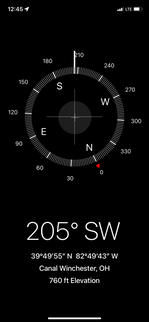
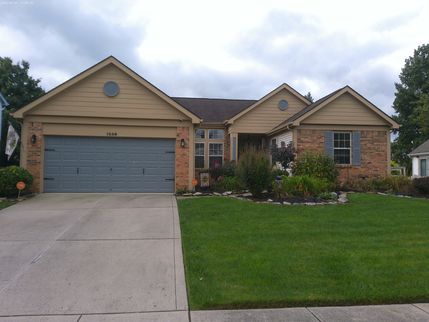
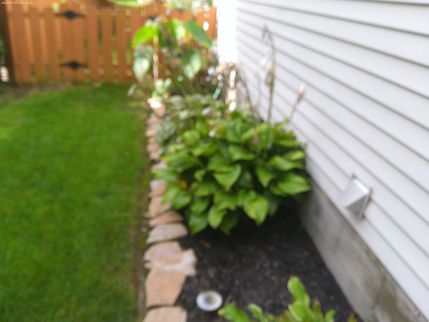

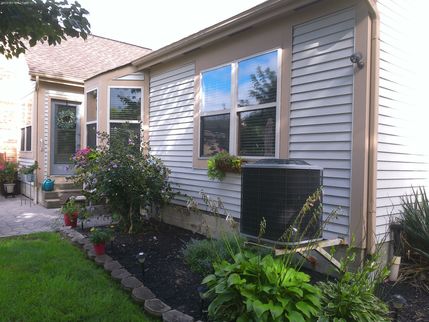
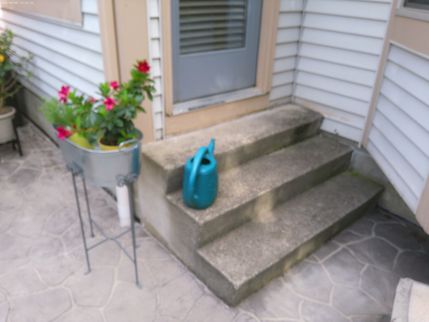
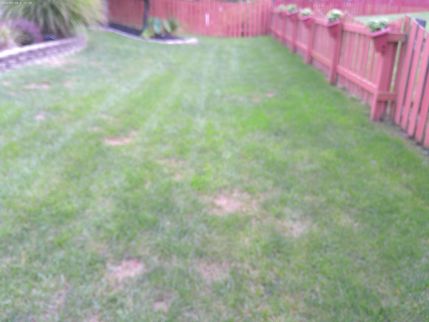
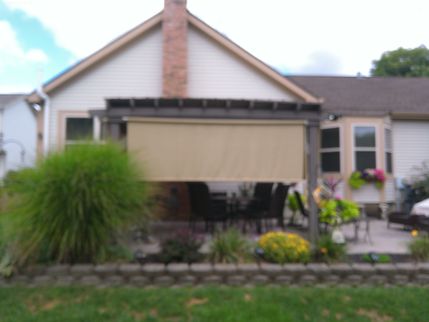
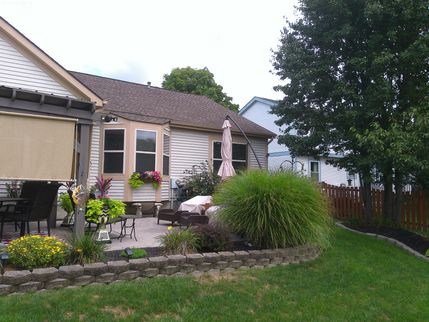
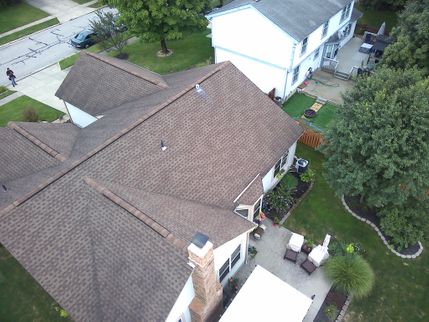
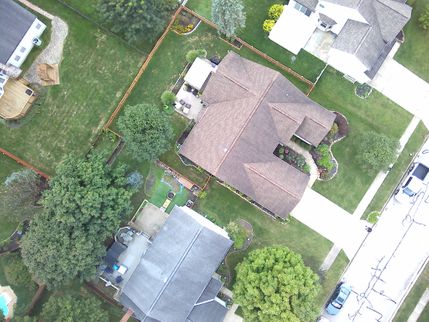
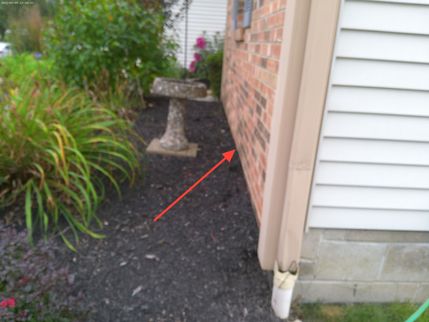
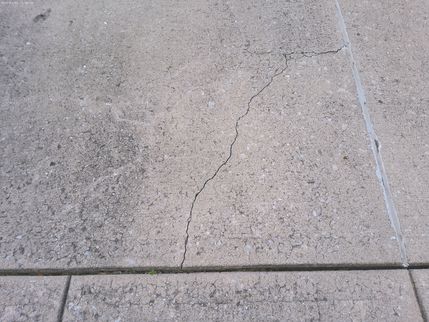
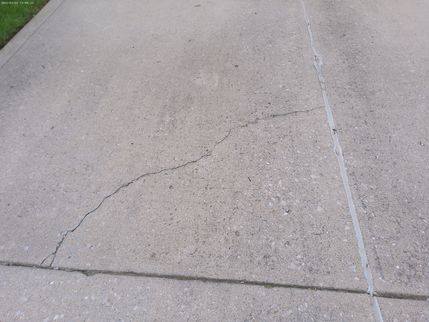

.jpg)
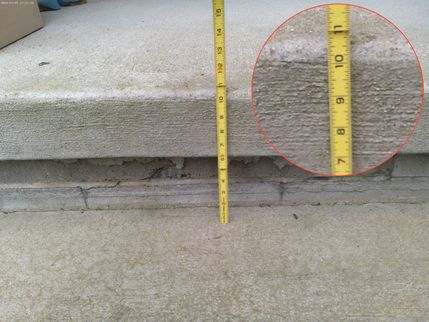


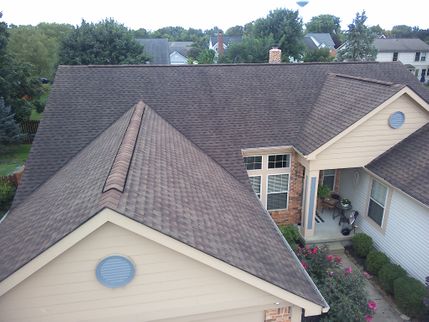

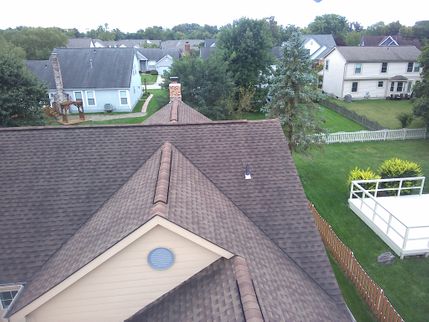
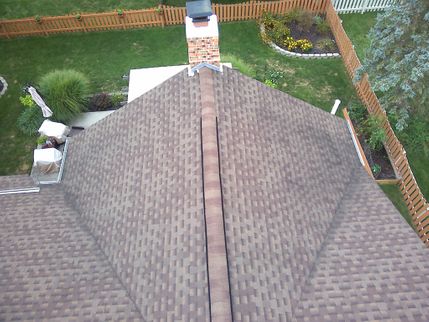
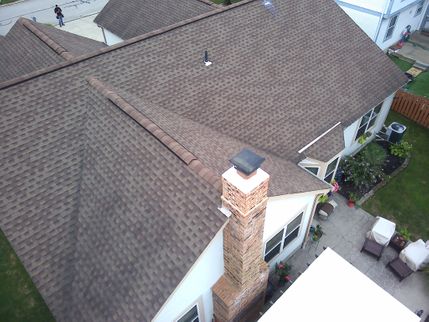
.jpg)
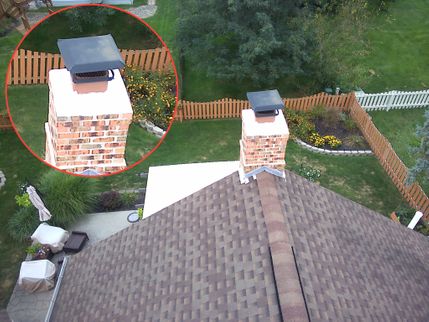
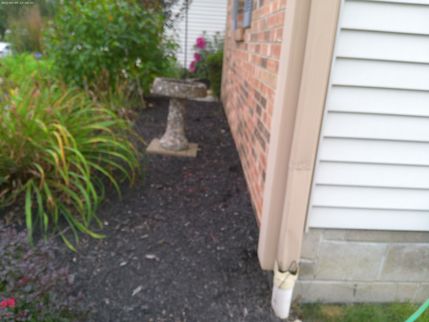
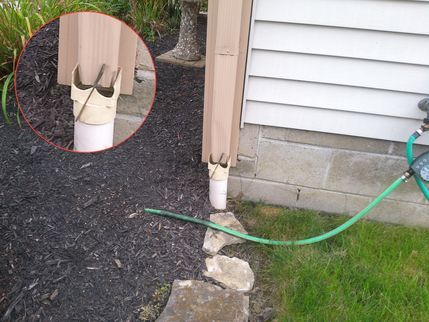

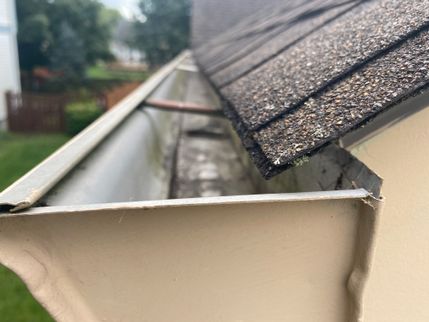

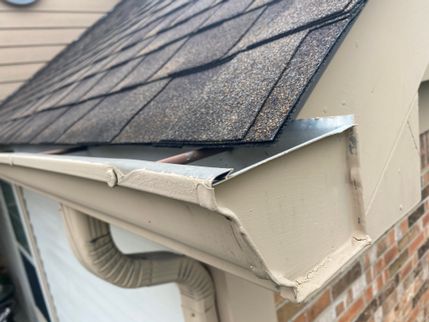
-700x500 (1) (1) (2).jpg)
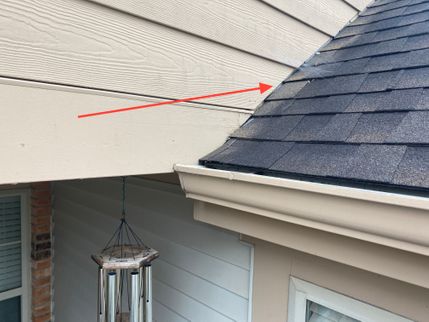
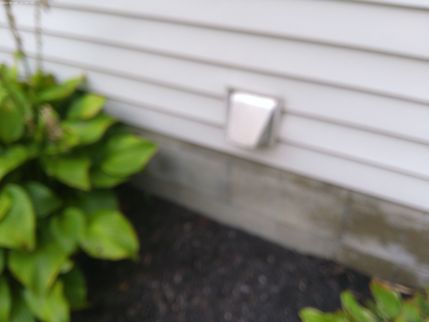
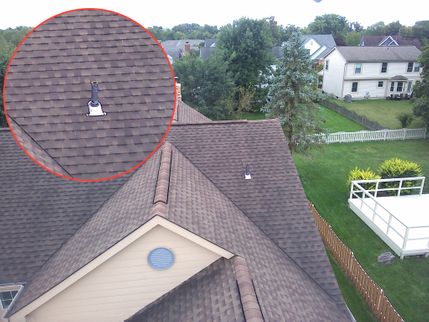
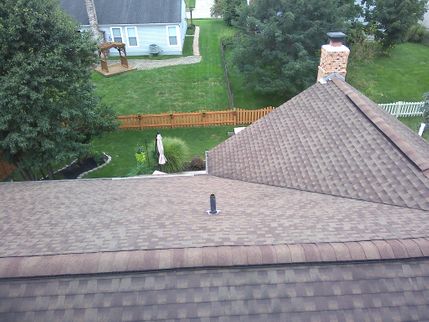
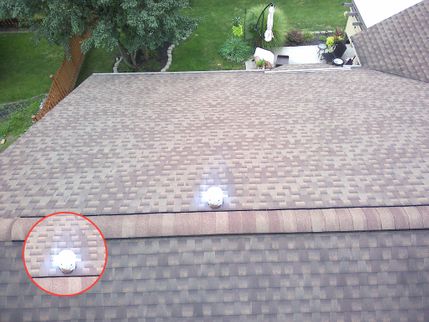
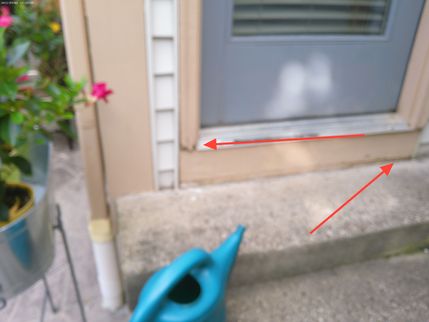
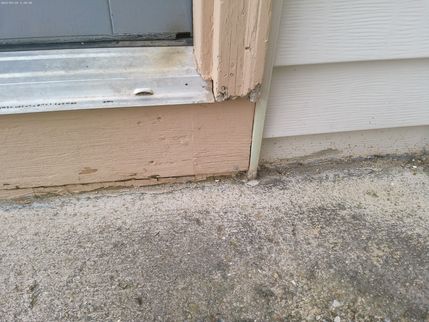
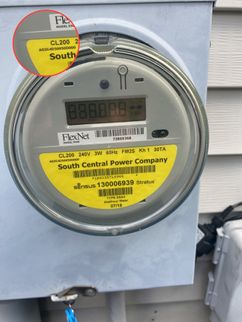
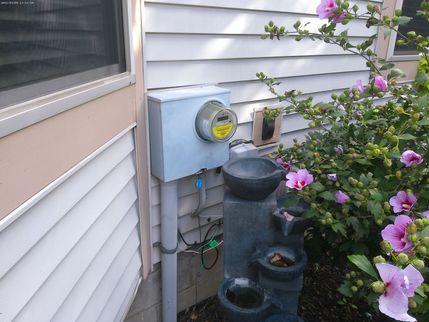
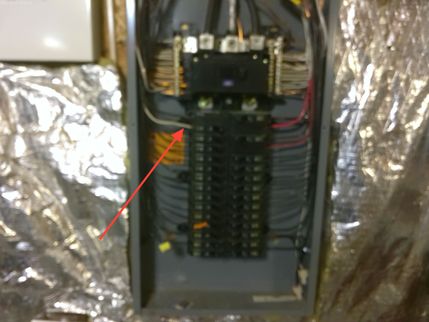
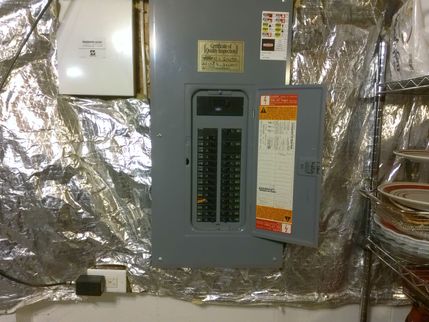
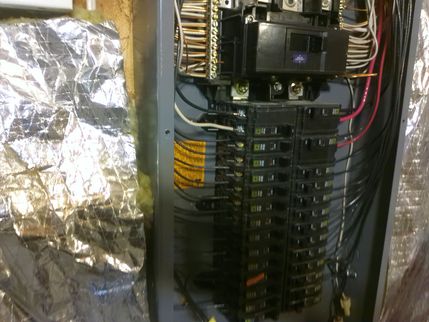


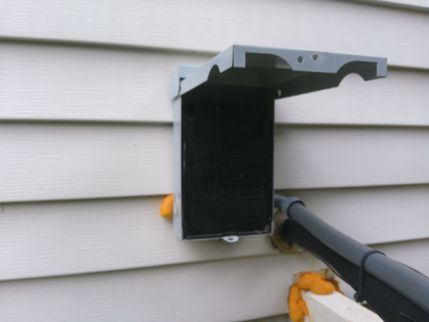
.png)
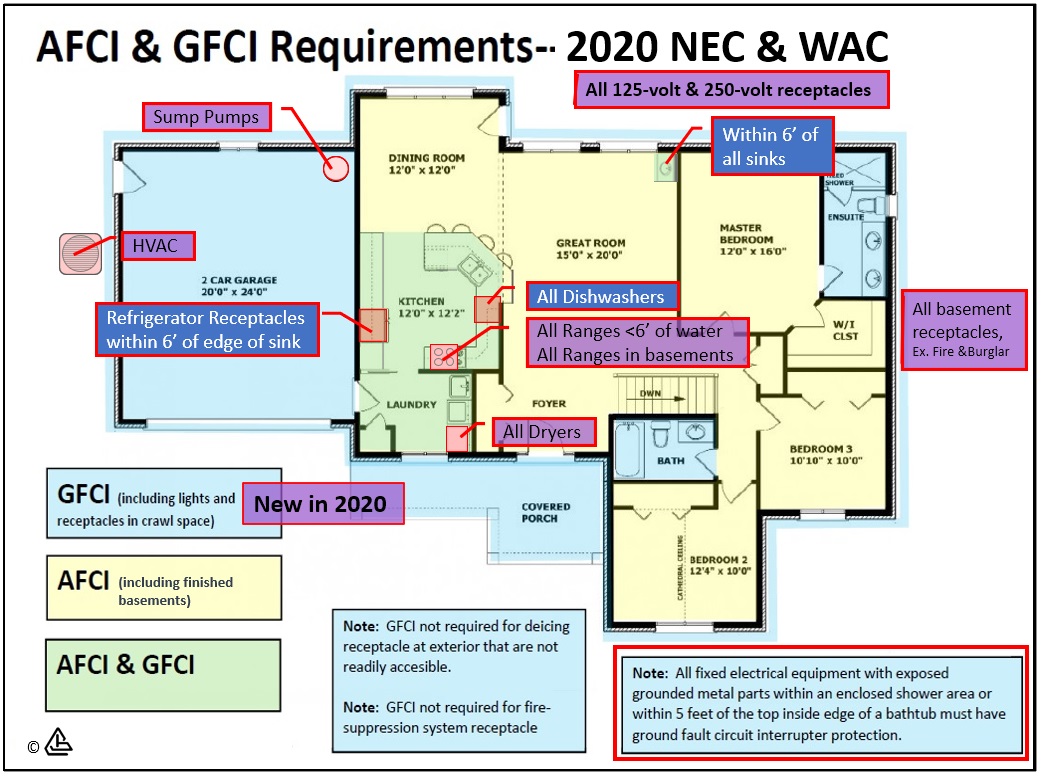
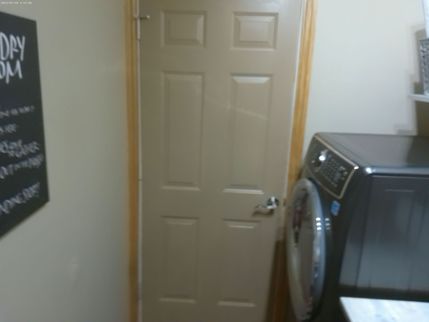
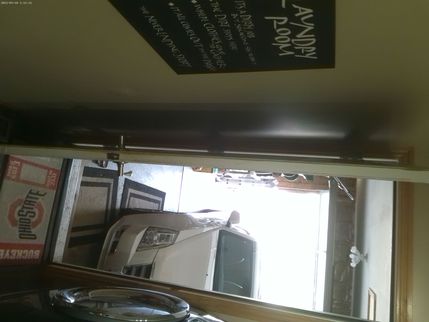
 (2).jpg)
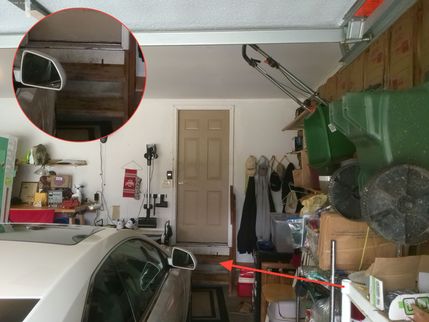
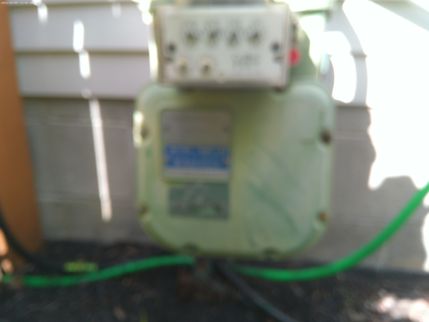

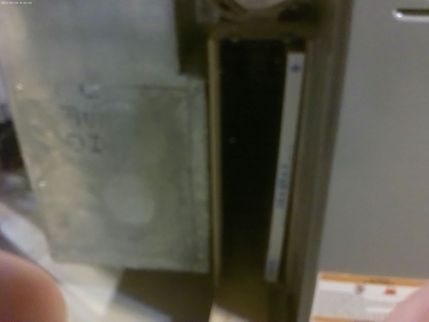
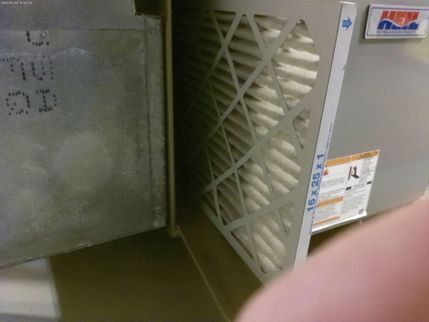


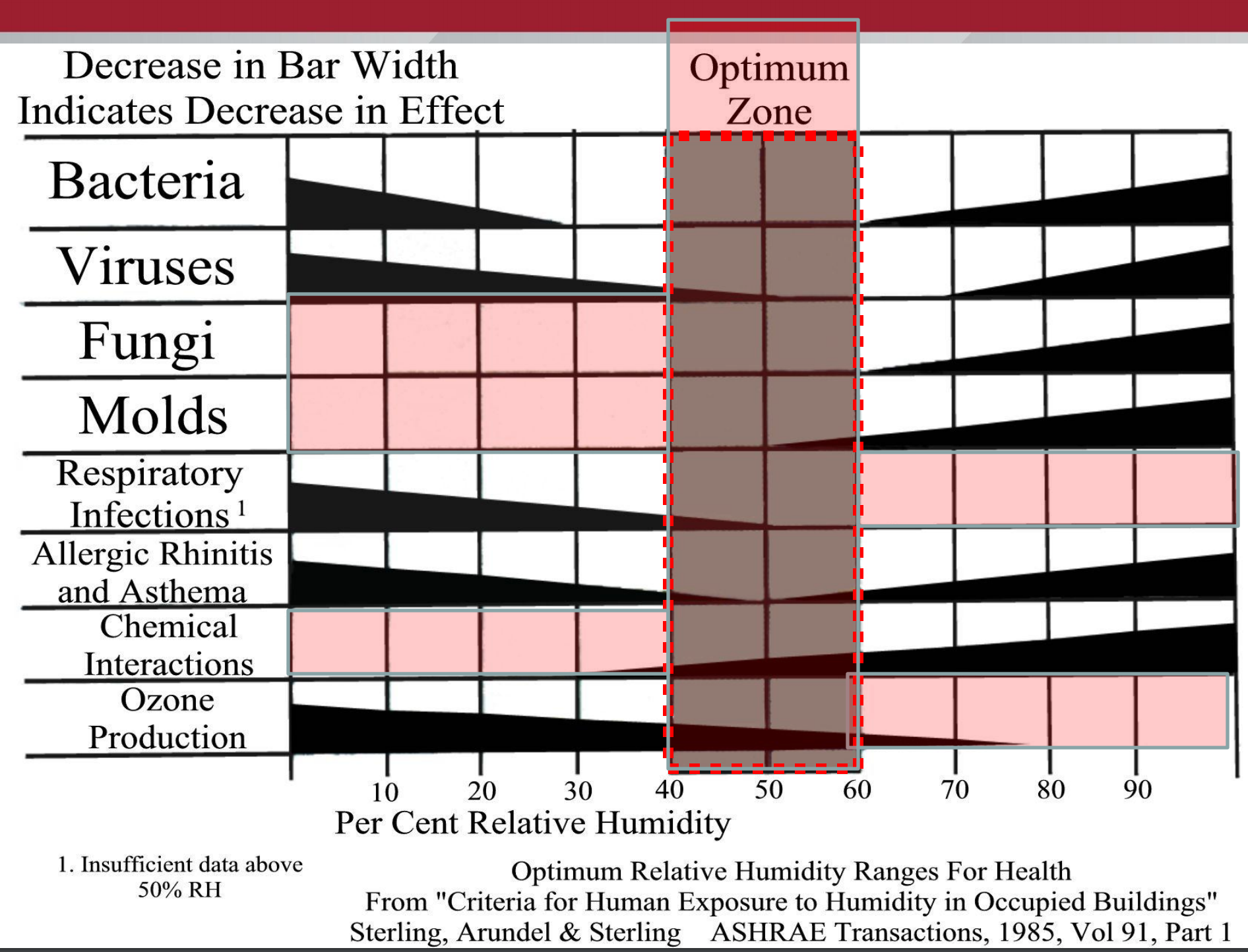
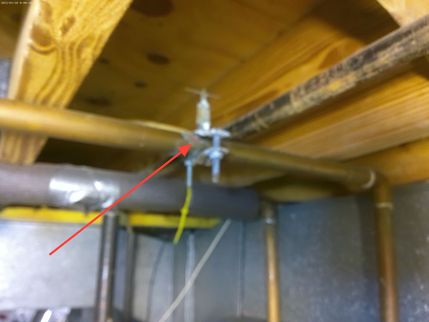
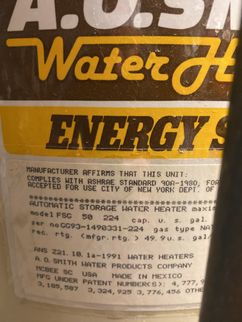

 (1) (1).jpg)

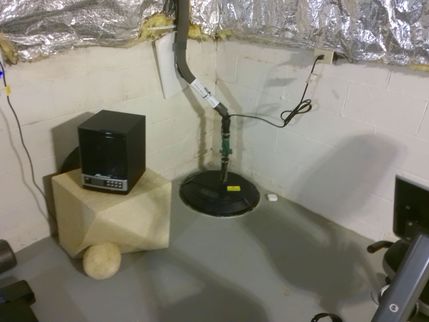
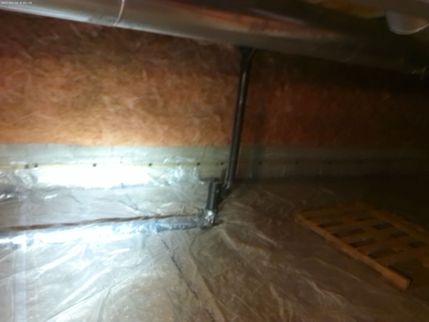
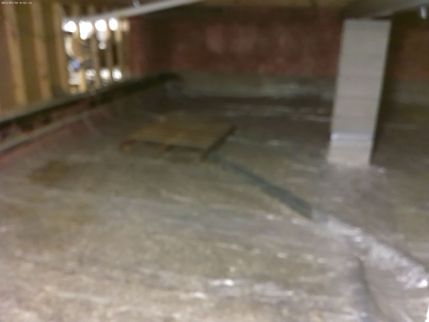
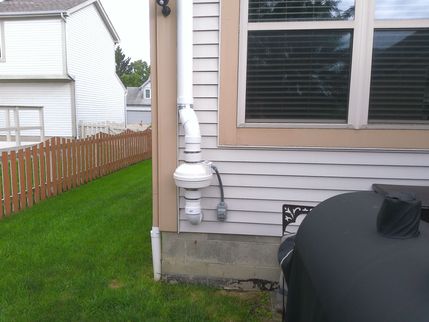
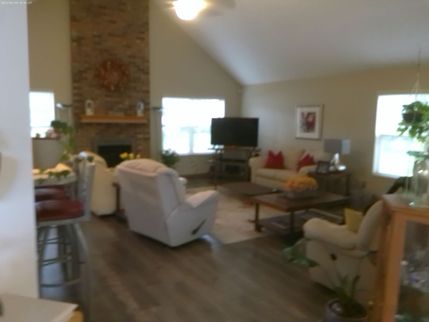

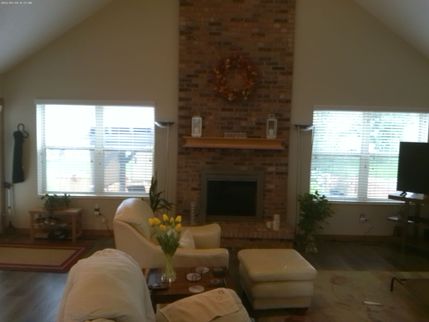
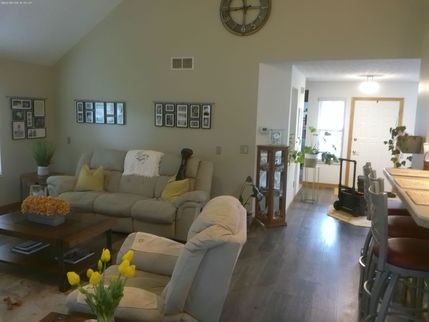
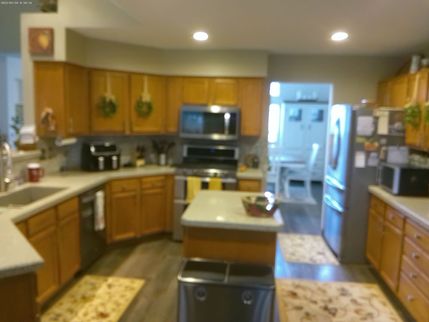

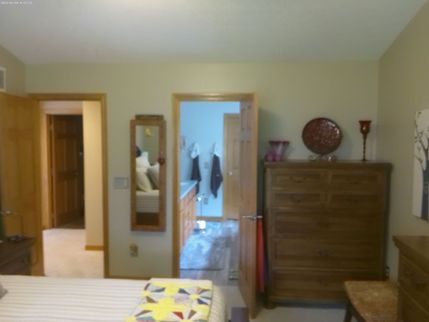
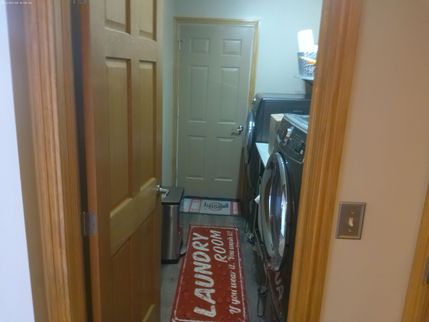

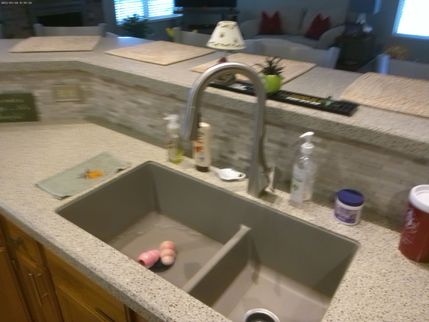
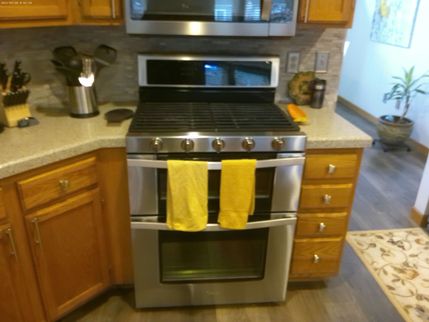
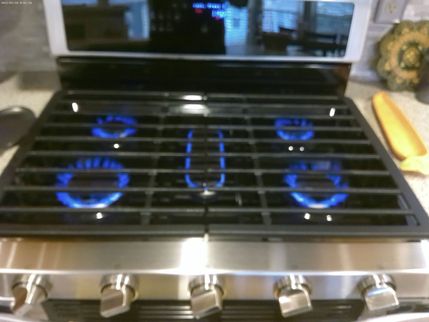
.jpg)
.jpg)
